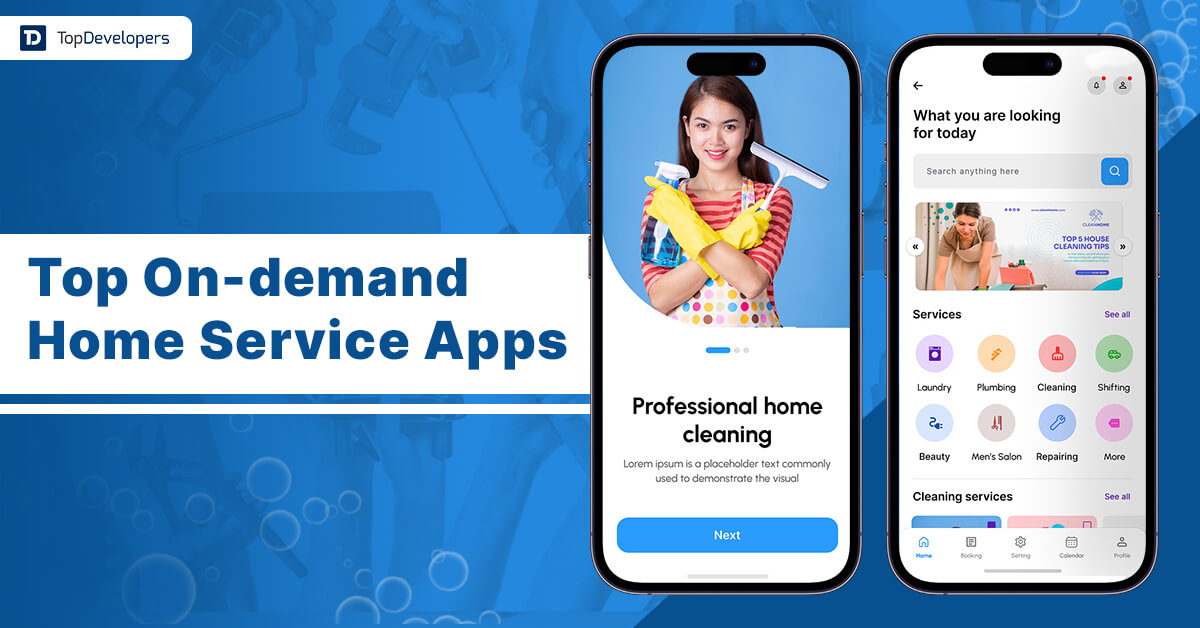
An OTT (Over-The-Top) video streaming app bypasses traditional cable or satellite television providers. It meets the need for instant gratification by delivering video content directly to viewers over the Internet. Users can access this content on various devices such as smartphones, tablets, smart TVs, and computers. OTT platforms offer a wide range of content, including movies, TV shows, web series documentaries, live events such as Cricket, Football, and original programming, often on a subscription or pay-per-view basis.
OTT streaming apps have gained immense popularity due to their convenience, flexibility, multi-device availability, personalization, adaptive streaming, and diverse content offerings. All of these capabilities ensure that the future of OTT video streaming apps is dynamic and transformative, driven by evolving technology, changing consumer habits, and industry trends.
A couple of OTT platforms have expanded to more regions globally, while new entrants playing catchup with big companies such as Netflix catering to diverse audiences with localized content. In this blog, we will take a look at the OTT platforms that have made the mark with unique services.
Table of Contents
Netflix
Netflix started its operations in 1997 as a rent-by-mail DVD service. The customers would order their favorite movie titles on the website of Netflix, and the company would deliver the DVD titles on the doorsteps of the customers. Over the years, the company has grown into a content behemoth boasting 200 million subscribers and more than 15000 titles to offer. The company is currently one of the largest producers of original content in the world as it focuses on building a vast original content library.
Apart from producing original content, Netflix has also emphasized acquiring quality content by partnering with other content producers. Netflix’s collaboration with Michael Bay and Comcast is a shining example of its aggressive content acquisition policy.
The personalized algorithm of Netflix, which suggests the next title that the viewers should watch, is a big hit with the audiences and is a differentiating factor in the company’s phenomenal success.
Disney+
Disney+ offers a host of entertainment services, including its comprehensive catalog of classical movies and T.V. series, Hulu, and ESPN’s content. Like its competitor, Netflix, Disney is investing heavily in producing original content apart from streaming motion pictures. Offerings like the Star Wars spin-off, & the Mandalorian are prime examples of the company’s investment into producing great content.
The strength of Disney+ lies in its rich content library, which includes content from its own classic collection of movies and shows like the Simpsons from its acquisition of the 21st century’s content library. Disney+ boasts of more than 100 million subscribers and intends to add 100 titles to its catalog. Also, they allow the users to stream videos on 4 devices simultaneously.
Amazon Prime
Amazon Prime is a bundle of services provided by the e-commerce giant. For a fixed yearly subscription, Amazon Prime subscribers not only get access to a wide range of video content, but they also get faster delivery options for products purchased through Amazon and even a free Kindle book every month.
Amazon generates more than $25 billion annually from its subscription service and boasts more than 150 million subscribers. Amazon Prime allows subscribers to download their favorite shows to watch them at a later date easily.
Amazon Prime has some exciting content like The Marvelous Mrs. Maisel, Tom Clancy’s Jack Ryan, The Wheel of Time. The company has collaborated with Viacom, allowing Amazon Prime users access to content from Comedy Control, MTV, and Nickelodeon. Amazon Prime is supported on Android, Apple T.V., and Smart T.V.s through Amazon Fire Stick, Xbox, and PS4.
Apple TV
Apple TV is a popular over-the-top (OTT) streaming service offered by Apple Inc. It was launched in 2019 as a way to provide users with access to a wide variety of on-demand content, including movies, TV shows, documentaries, original programming, and more.
One of the highlights of the service is its original programming. Apple has invested in creating its exclusive TV shows and movies through Apple TV+. These original productions feature well-known actors, directors, and creators, and are available exclusively on the Apple TV platform. Besides, the tight integration with Apple’s ecosystem allows users to access the service on various Apple devices, including iPhones, iPads, Macs, and Apple TVs with a seamless transition between devices.
The subscription fee for Apple TV+ was competitive compared to other streaming services. It was priced at $4.99 per month, and users could also access a 7-day free trial. With Family Sharing, users can share their Apple TV subscriptions and purchases with family members, making it more cost-effective for households with multiple Apple devices.
Some of the original content produced by Apple TV+ received critical acclaim and awards recognition. For example, “The Morning Show” received several award nominations.
Hulu TV
Hulu is an American subscription-based streaming service that was launched in 2008 and has become one of the major players in the OTT streaming market with an 11% share. Hulu is known for its focus on providing current-season TV show episodes shortly after they air, in addition to its original content and library of past TV shows and movies.
Hulu offers different subscription tiers. The basic plan includes ads during content playback, while the more expensive plans offer an ad-free experience and additional features. Hulu + Live TV provides access to live television channels, allowing users to stream news, sports, and other live events in addition to on-demand content. Hulu had over 55 million subscribers in the United States. This figure includes both on-demand and Hulu + Live TV subscribers.
Hulu produces its original TV shows and movies, including critically acclaimed series like “The Handmaid’s Tale,” “Castle Rock,” “Ramy,” and more. Out of which, “The Handmaid’s Tale,” received critical acclaim and won multiple awards, helping to establish Hulu as a platform for high-quality original content.
Peacock
Peacock is a streaming service provider from NBC Universal, which is a Comcast-owned streaming service. One of the most cost-effective services, Peacock provides thousands of hours of free viewing to its users. The users can pay a small monthly fee and access premium content like the popular sitcom. i.e. The Office which includes extended episodes with deleted scenes and Superfan episodes.
Peacock-paying members also unlock exclusive access to more than 175 Premier League soccer matches. The members can also watch titles like The Suits, Yellowstone, Based on True Story, Mrs. Davis, NXT, Jimmy Fallon, and the WWE shows. Peacock releases content a week early for its premium members which is a distinct feature of the platform.
Max (HBO Max)
Max, prior HBO Max, is Warnermedia’s streaming service. The service has a large content bank from the house of Warner Bros. The content library includes titles from D.C. Comics, Lord of the Rings, Harry Potter, animation from Crunchyroll and Studio Ghibli, and many other titles.
Max also offers a massive collection of international films from Criterion’s library. HBO cable subscribers can avail themselves of Max at no additional cost.
Discovery+
Discovery+ is an on-demand video streaming service from the house of a popular infotainment provider, the Discovery Networks. American streaming service comes in two modes; one is the light commercial mode, where the channel promises to show only 5 minutes of advertising per hour and an ad-free mode where it won’t show any ads.
Discovery+ is available across a wide range of platforms and devices, including Apple T.V., Fire T.V., Chromecast, Android T.V., Xbox consoles, to name a few. Discovery Plus has a massive content library consisting of more than 55,000 episodes from 2500+ series across its brands like TLC, Food Networks, Lifetime, OWN, Animal Planet, Discovery Channel, and the travel channel. Discovery has entered into a partnership with Vodafone to ensure that Discovery+ is available across 12 European markets.
Pricing Table for OTT Platform (Platform Price Comparison)
All the OTT platforms have gained a fair share of the market by offering a range of services to users under multiple subscription plans. A quick look at the differences in the subscription plans.
| OTT platforms | Basic plan | Premium plan | Premium plan |
|---|---|---|---|
| Netflix | $9.99 per month | $19.99 per month | SVOD |
| Disney+ | $7.99 per month | $10.99 per month | Hybrid |
| Hulu | $7.99 per month | $14.99 per month | Hybrid |
| Amazon Prime | $14.99 per month | $8.99 per month | Hybrid |
| HBO | $9.99 per month | $415.99 per month | SVOD |
What’s Your Reaction?
The future of OTT video streaming apps is bright, marked by innovation, technology advancements, and evolving user preferences. It’s clearly visible from the grand success in terms of subscriptions and revenue gained by OTT video streaming service providers. While the market is currently crowded, there might be consolidation as some players merge or exit, leading to a few dominant platforms. However, the landscape will remain competitive, and successful platforms will need to adapt to changing trends and deliver compelling, high-quality content to capture and retain their audience.
All in all, cord-cutting continues and continuous enhancements allow OTT streaming service providers to gain an edge in the fierce competition. If interested, come up with a unique OTT streaming application and develop it to fill the void, thrive and make the most out of the opportunity.
 Derek Cohen
| Aug 16, 2023
Derek Cohen
| Aug 16, 2023
Analyzing business activities and data to formulate the best business development ideas is where I earn appreciations and remunerations. I’m an ardent reader, business adviser, gadget aficionado and an amateur yet an avid writer. My urge for innovative writing evokes every time I come across new gadgets, neo technology and novel technical events.

